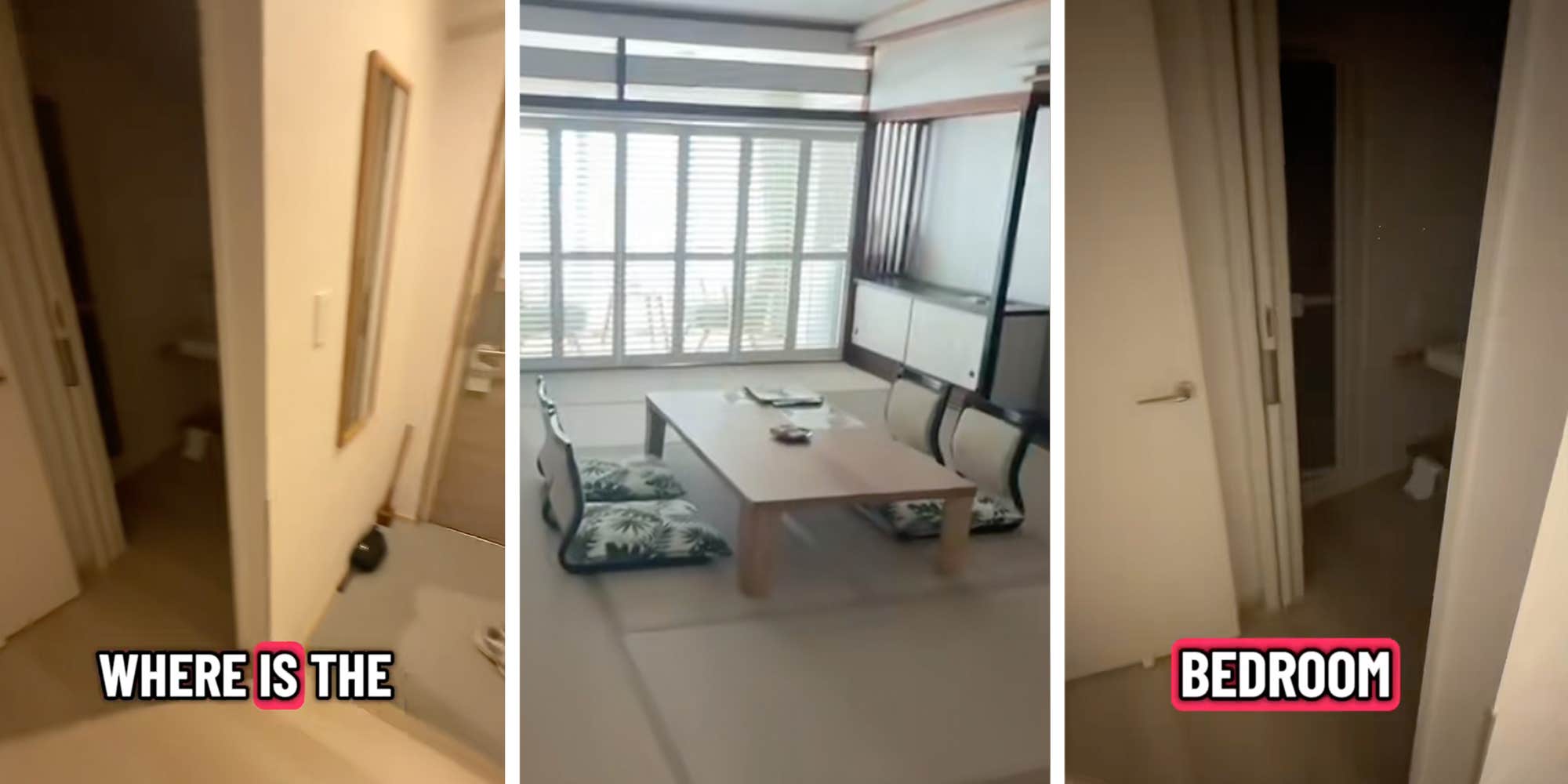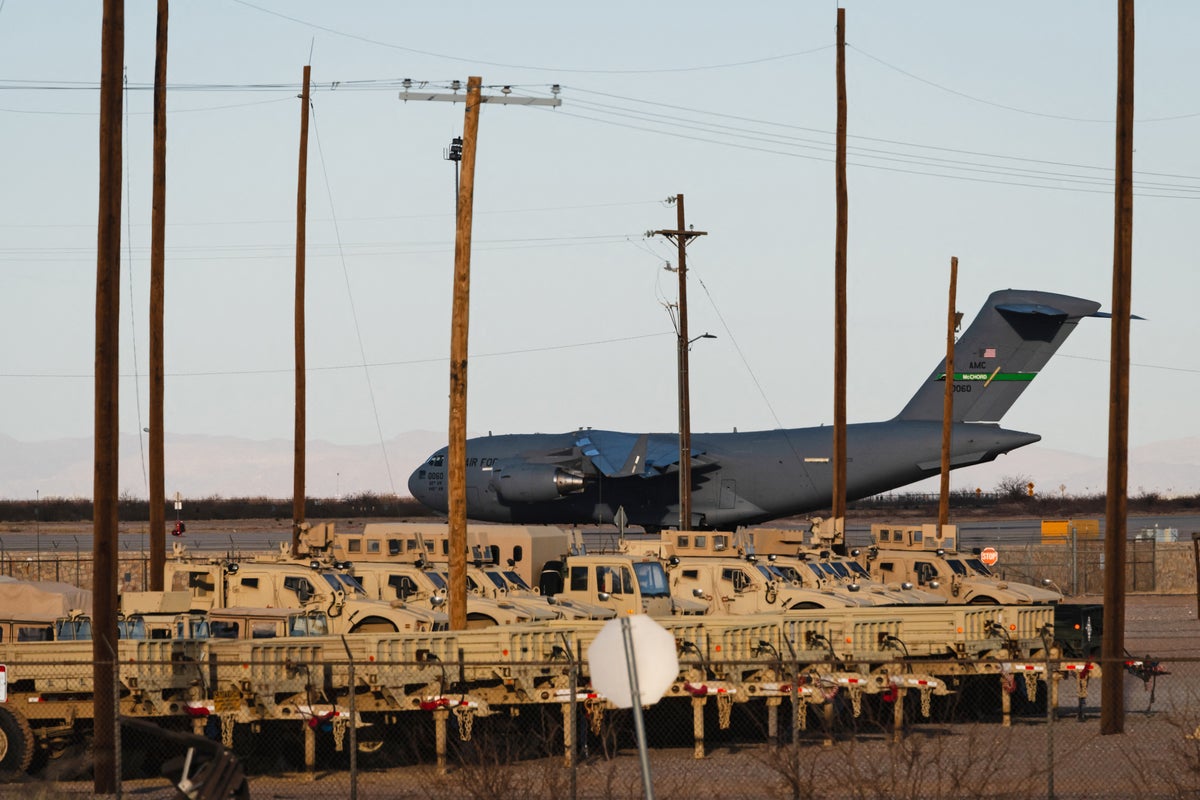
The 'New Gaza' plan - and the four militias Israel is backing to defeat Hamas
Israel may have agreed to stop fighting in Gaza, but it is backing armed groups that plan to fight Hamas to the bitter end. Sky News has confirmed for the first time that four anti-Hamas militias are all backed by Israel, and consider themselves part of a joint project to remove Hamas from power. The groups are all operating from areas still under Israeli control, behind what's been called the "yellow line" - the boundary for Israel Defence Forces (IDF) troop deployments established by the ceasefire agreement. "We have an official project - me, [Yasser] Abu Shabab, [Rami] Halas, and [Ashraf] al Mansi," says militia leader Hossam al Astal, speaking to Sky News from his base in southern Gaza. "We are all for 'The New Gaza'. Soon we will achieve full control of the Gaza Strip and will gather under one umbrella." The footage below, shared with Sky News, shows troops from Hossam al Astal's militia parading near its base. We used the video to identify the location of the militia's headquarters for the first time. It is situated on a military road that runs along the yellow line, less than 700 metres from the nearest IDF outpost. "I'm hearing the sound of tanks now while I'm speaking, perhaps they're out on patrol or something, but I'm not worried," says al Astal. "They don't engage us, and we don't engage them [...] We've agreed, through the coordinator, that this is a green zone, not to be targeted by shelling or gunfire." The New Gaza This area, now a patchwork of rubble and military berms, was once a leafy suburb of Gaza's second city, Khan Younis. Al Astal says he grew up here, but was forced to flee in 2010 after being pursued by Hamas over his involvement in militant groups aligned with their rival, the West Bank-based Palestinian Authority (PA). He spent the next 11 years abroad, working for the PA's security services in Egypt and Malaysia. Two months after he returned to Gaza, he was accused of involvement in the 2018 assassination of a Hamas member in Malaysia and sentenced to death. "When the war started, they left us locked up, hoping the Israelis would bomb the prison and rid them of us," he says. "Two months later, we broke down the doors and escaped." He says that his weapons, mainly Kalashnikov rifles, are purchased from former Hamas fighters on the black market. Ammunition and vehicles, on the other hand, are delivered through the Kerem Shalom border crossing after coordination with the Israeli military. This is the same border crossing used by another militia leader, Yasser Abu Shabab. Sky News previously revealed that Abu Shabab's militia was smuggling vehicles into Gaza with the help of the Israeli military and an Arab-Israeli car dealer. Al Astal says he uses the same car dealer. One of his vehicles appears to have Hebrew writing on the side, which has been partially scratched out. He says his militia also receives weekly deliveries of everyday items needed to support the civilians living at the camp. "We currently provide basic medical and education support to roughly 30 families," he says. "Children can get apples and bananas, food and drink, chips and so on. By contrast, in the other area, in the tents, you find five-, 10- or even 15-year-olds surviving on little more than lentils and pasta." He says these supplies come in via weekly deliveries. In the video below, a cargo truck can be seen at the militia's base. A similar cargo truck can be seen in satellite imagery of the camp, taken on 14 October. Sky News has also confirmed that the other two militias, which are operating in the north of Gaza, are receiving supplies from Israel. The video below, filmed by a member of Ashraf al Mansi's militia, shows a car loaded with supplies driving towards their base. A member of the other militia operating in northern Gaza, which is led by Rami Halas, told Sky News that coordination with the IDF is done indirectly through the District Coordination Office. It's part of the Israeli defence ministry, but also includes officials from the PA - Palestine's internationally recognised government, based in the West Bank. This fits with what we were told by al Astal, by an Israeli soldier stationed at Kerem Shalom, and by a senior commander in Abu Shabab's militia - that coordination with the military is managed indirectly, and that the PA plays a key role. "I have people within my group who are still, to this day, employees of the Palestinian Authority," says al Astal. The PA did not respond to Sky's questions, but has previously denied having any relationship to these militias. "The Palestinian Authority can't admit to having a direct relationship with us," the militia leader says. "It already has enough issues and doesn't want to add to that burden. You know, if word got out that they had ties with militias or with the occupation forces, you can imagine how that would look." Military coordination Although he acknowledges working with Israel to secure supplies, al Astal denies he has ever coordinated military operations with the IDF. Sky News previously reported that Israeli aircraft had intervened in two battles fought by Abu Shabab's militia. We asked Abu Shabab whether these were due to coordination, but did not receive a response. Hamas accused al Astal's militia group of direct military coordination after several of its fighters were killed when Israel intervened during a battle between the two groups on 3 October. The footage below, published by the IDF, shows the strikes that day. "I don't control Israeli airstrikes," al Astal says. "The Israelis simply saw armed Hamas military groups and struck them." In April, two months before he founded the militia, al Astal's own tent was hit by an Israeli bomb. The strike killed his 22-year-old daughter, Nihad, who was seven months pregnant. "People accuse me of collaboration," he says. "How can anyone speak about me like that? Were the Israelis 'joking around' with me with a missile?" He believes the strike was intended for a Hamas member living nearby. "If I listed every crime against children and women, the blame wouldn't rest on Israel but on Hamas, which hid among the people." Support from outside powers Multiple sources also told Sky News that the militias are also receiving support from outside powers. The deputy leader of Abu Shabab's militia, Ghassan al Duhine, has twice been photographed next to a vehicle with a UAE-registered licence plate. Sky News also found that the logo of the group's armed wing, the Counter Terrorism Service, is almost identical to that used by a UAE-backed militia of the same name operating in Yemen. The logo used by al Astal's militia, the Counter Terrorism Strike Force, similarly uses the same illustration as that used by a different UAE-backed militia, also based in Yemen. The UAE did not respond to Sky's request for comment. When we asked al Astal whether he enjoyed the backing of the UAE, he smiled. "God willing, in time everything will become clear," he said. "But yes, there are Arab countries that support our project." That project, al Astal says, has a name: The New Gaza. 'No war... no Hamas, no terrorism' "Very soon, God willing, you will see this for yourselves; we will become the new administration of Gaza. Our project is 'The New Gaza'. No war, at peace with everyone - no Hamas, no terrorism." Two days after Sky News spoke to al Astal, Donald Trump's son-in-law and senior advisor, Jared Kushner, used the phrase himself while suggesting that Gaza could be split indefinitely along the yellow line. "No reconstruction funds will be going into areas that Hamas still controls," Kushner told reporters on Wednesday. "There are considerations happening now in the area that the IDF controls, as long as that can be secured, to start the construction as a 'New Gaza' in order to give Palestinians living in Gaza a place to go, a place to get jobs." The IDF declined to comment on these findings. Hamas, the PA and the Coordinator of Government Activities in the Territories, the Israeli agency which manages the Israel-Gaza border, did not respond to our requests for comment. The Data and Forensics team is a multi-skilled unit dedicated to providing transparent journalism from Sky News. We gather, analyse and visualise data to tell data-driven stories. We combine traditional reporting skills with advanced analysis of satellite images, social media and other open source information. Through multimedia storytelling we aim to better explain the world while also showing how our journalism is done.













